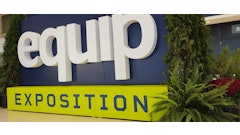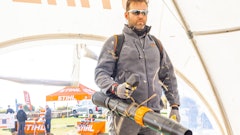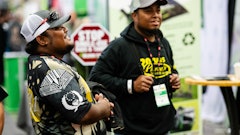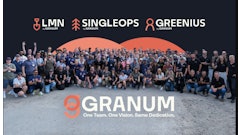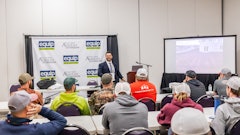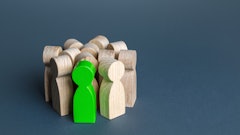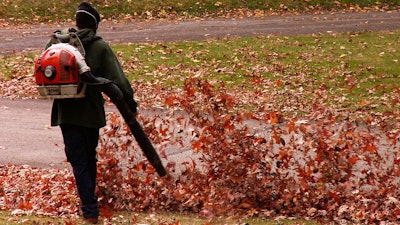
The Outdoor Power Equipment Institute (OPEI) recently sent the below letter to the editor to the Wall Street Journal in response to an op-ed article entitled “Leaf Blowers Are Loud, Ugly and Dangerous,” which was published on October 18. An edited-down version was subsequently published. The original letter, penned by OPEI President and CEO Kris Kiser in the hopes of encouraging the green industry to continue to combat the negative perception of leaf blowers in the media, follows:
Dear Editor,
In “Leaf Blowers Are Loud, Ugly and Dangerous” (Oct. 18), author Adrienne Bernhard attacks leaf blowers in a sweeping indictment and is clearly working with old data, old narratives, and old stereotypes of these valuable tools without any understanding of the current marketplace reality and progress of modern outdoor power equipment.
Once again, we have an author asking for the removal of a working tool for the working man. There is a simple reason why leaf blowers and other outdoor power equipment products are ubiquitous. They work. They save labor and time when clearing sports fields, parking lots and garages and other large spaces, and the leaf blower is important to the landscaper who is paid by the job in communities with rigorous zoning on leaf pickup and removal. They also save water, helping clean surfaces without having to use potable water from a hose. They help people with physical limitations maintain their own properties, such as my 85-year-old mother who would be quite challenged with a rake. Instead, she uses her small, electric leaf blower to clear her steps and walkway of debris and leaves. Those are the practical realities of the need for this valuable tool.
Most troubling of the piece, however, was the author ignoring the innovation and progress around emission and noise reduction of these products, and points to an outdated 2011 study to indict all leaf blowers today. These products are regulated by the federal government and the state of California, and they are the cleanest and quietest they’ve ever been. We invite her to walk into any Lowe’s, Home Depot or equipment dealer’s showroom floor to see the myriad of both commercial and consumer products powered by lithium-ion battery and the updated, reduced-emission four-cycle, gasoline-powered engines. Today’s leaf blowers are 75 percent quieter than those used a decade ago and manufacturers have reduced emissions by as much as 80 percent. Yet the author rails against all leaf blowers.
The author also seems to believe one “answer” to ending leaf blower use is to deaden the landscape, and instead promote hardscapes and succulents. She suggests getting rid of the “leafy trees and green lawns” altogether. How is that promoting sustainability? Trees and ordinary turf grass are brilliant at sequestering carbon, producing oxygen, capturing and filtering precious rainfall, collecting dust and particulate matter, and reducing heat. Green spaces are not just something pretty to look at. They are working 24/7 to make our world greener and healthier. Lawns and shade trees also are integral to outdoor living, and a safe space for kids and pets, not to mention valuable urban habitat, food and resting places for wildlife. We invite this author to dig a little deeper in her research on what living landscapes achieve and contribute to communities worldwide. (Oh, and she should also notice the number one home to Lyme disease-riddled ticks are leaf piles.)
The manufacturers of these outdoor power tools are “outsiders” who understand that the outdoors and living landscapes are a vital part of our well-being. As an industry, we champion these products and tools because they are creating safe, healthy spaces for outdoor living, our families and pets. We understand sometimes it’s a short-term inconvenience to have power equipment working around you, but removing living landscapes and removing the working equipment of the laborer isn’t the answer. The ongoing, extensive innovation of outdoor power equipment is the answer.
Kris Kiser
President & CEO, Outdoor Power Equipment Institute (OPEI)
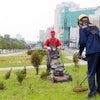
![Doosan Bobcat Wacker Neuson Stack 2ec Js Pb V6e[1]](https://img.greenindustrypros.com/mindful/acbm/workspaces/default/uploads/2025/12/doosan-bobcat-wacker-neuson-stack2ecjspbv6e1.CPyyz8ubHn.png?auto=format%2Ccompress&bg=fff&fill-color=fff&fit=fill&h=100&q=70&w=100)


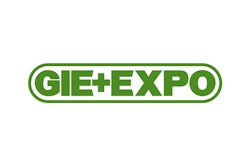

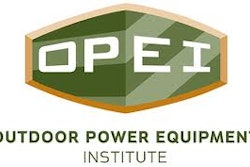

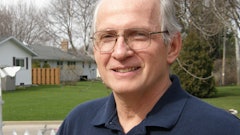
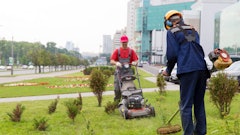
![Doosan Bobcat Wacker Neuson Stack 2ec Js Pb V6e[1]](https://img.greenindustrypros.com/mindful/acbm/workspaces/default/uploads/2025/12/doosan-bobcat-wacker-neuson-stack2ecjspbv6e1.CPyyz8ubHn.png?ar=16%3A9&auto=format%2Ccompress&bg=fff&fill-color=fff&fit=fill&h=135&q=70&w=240)

